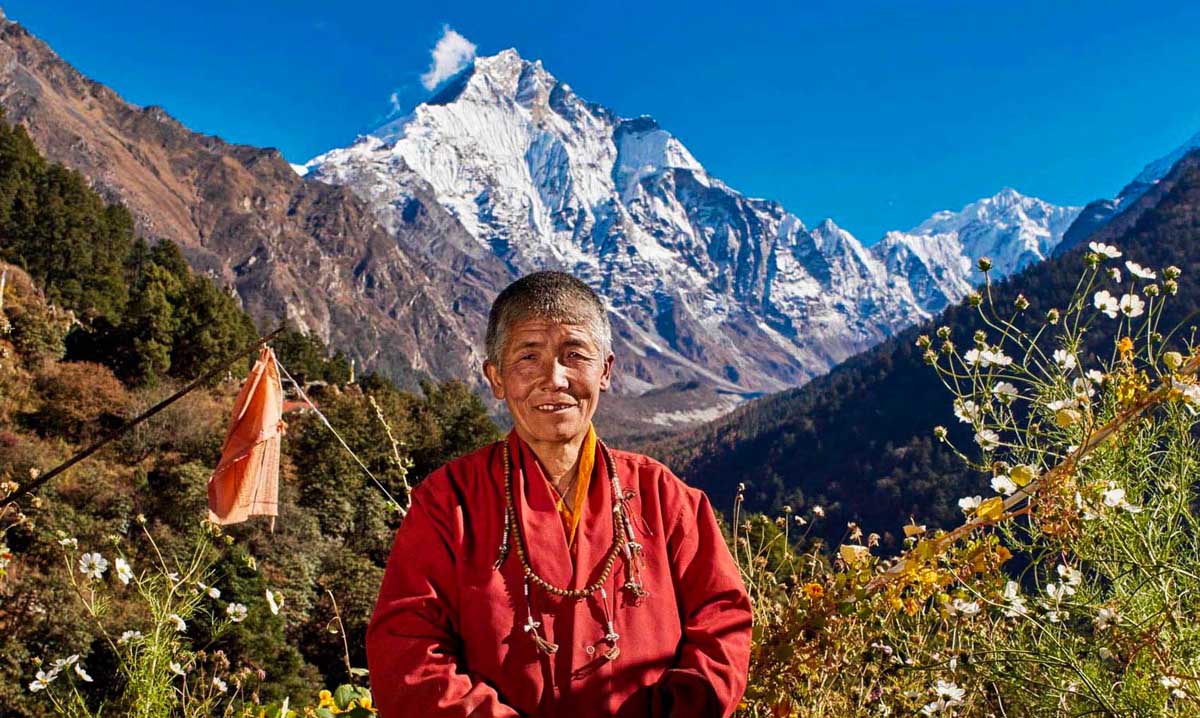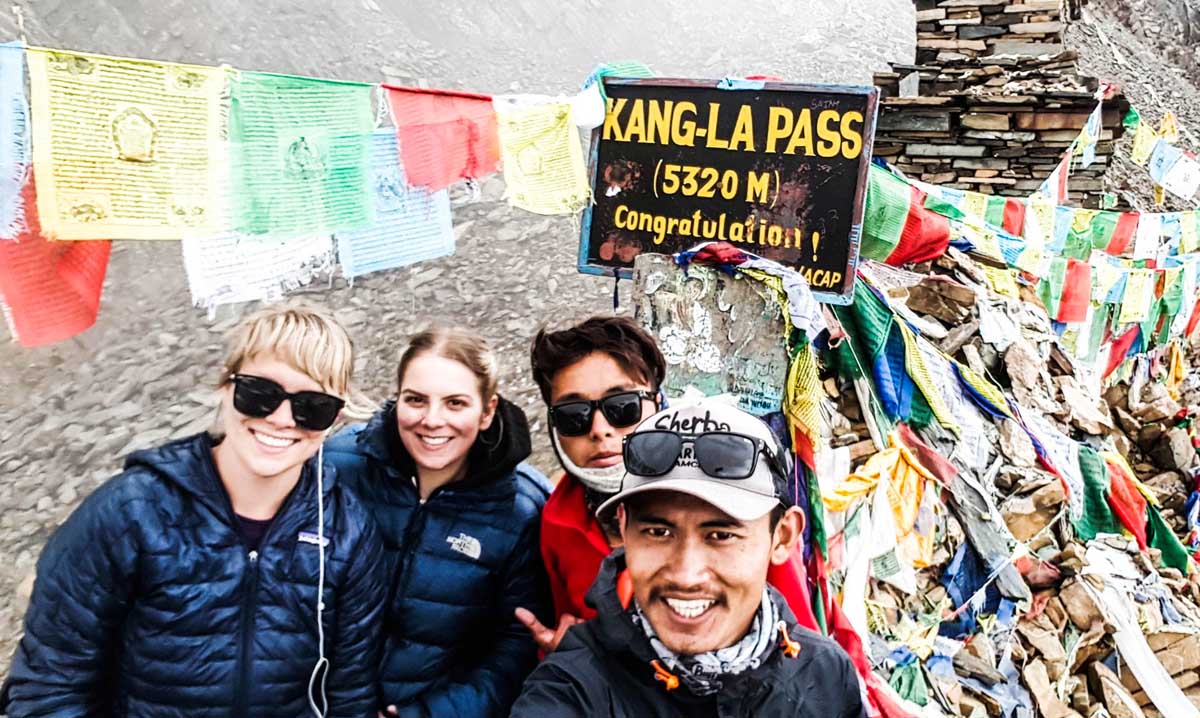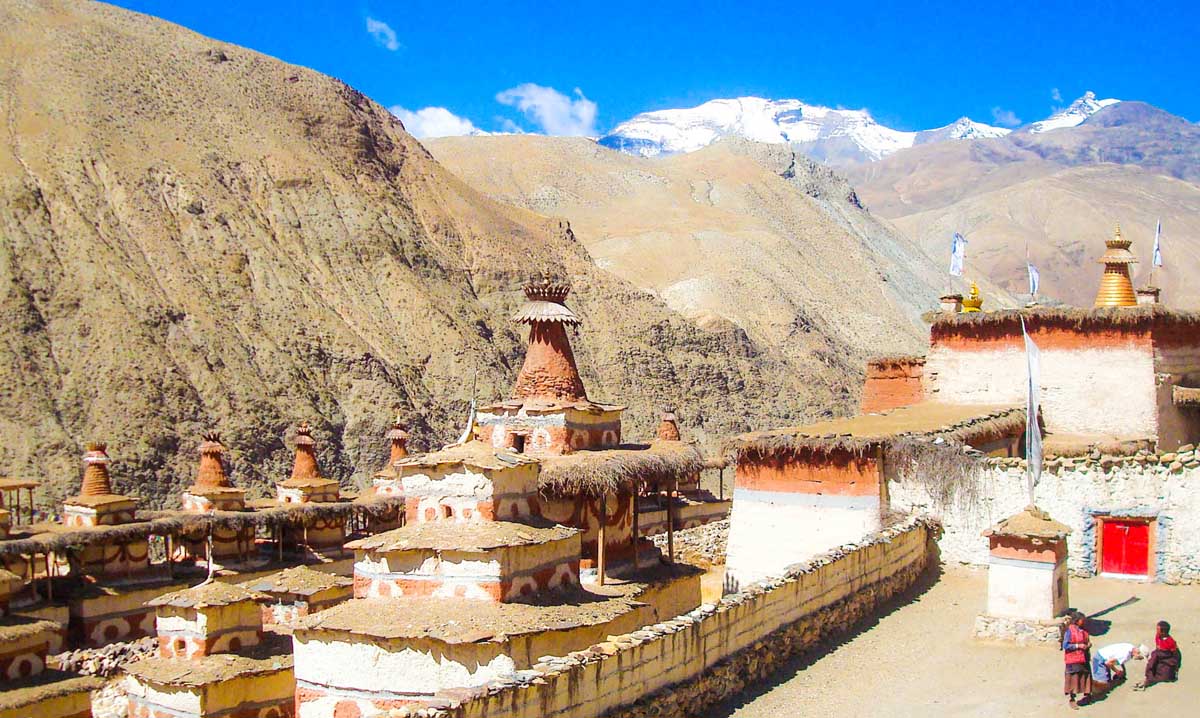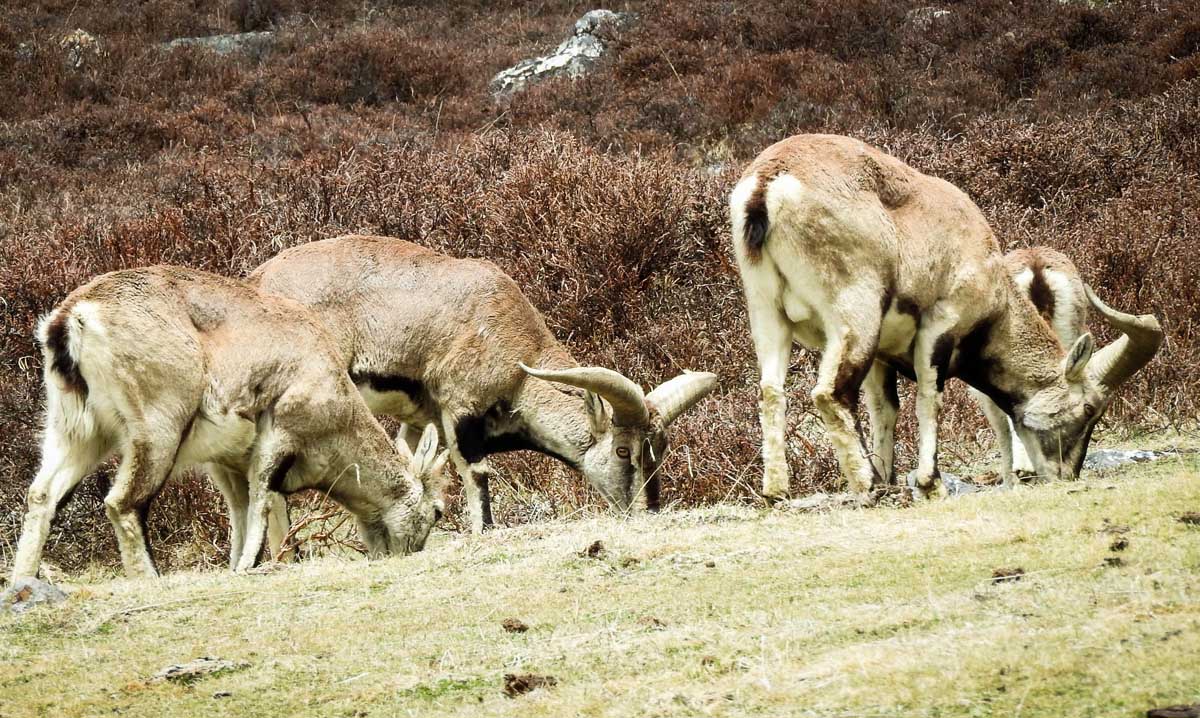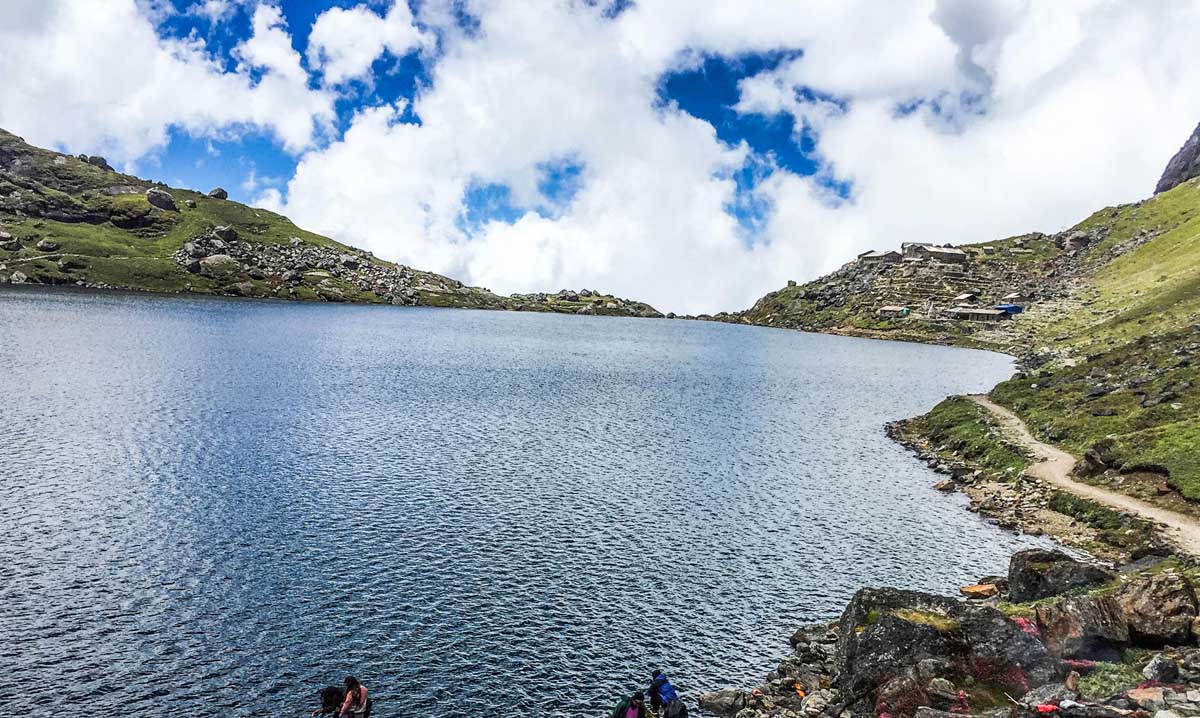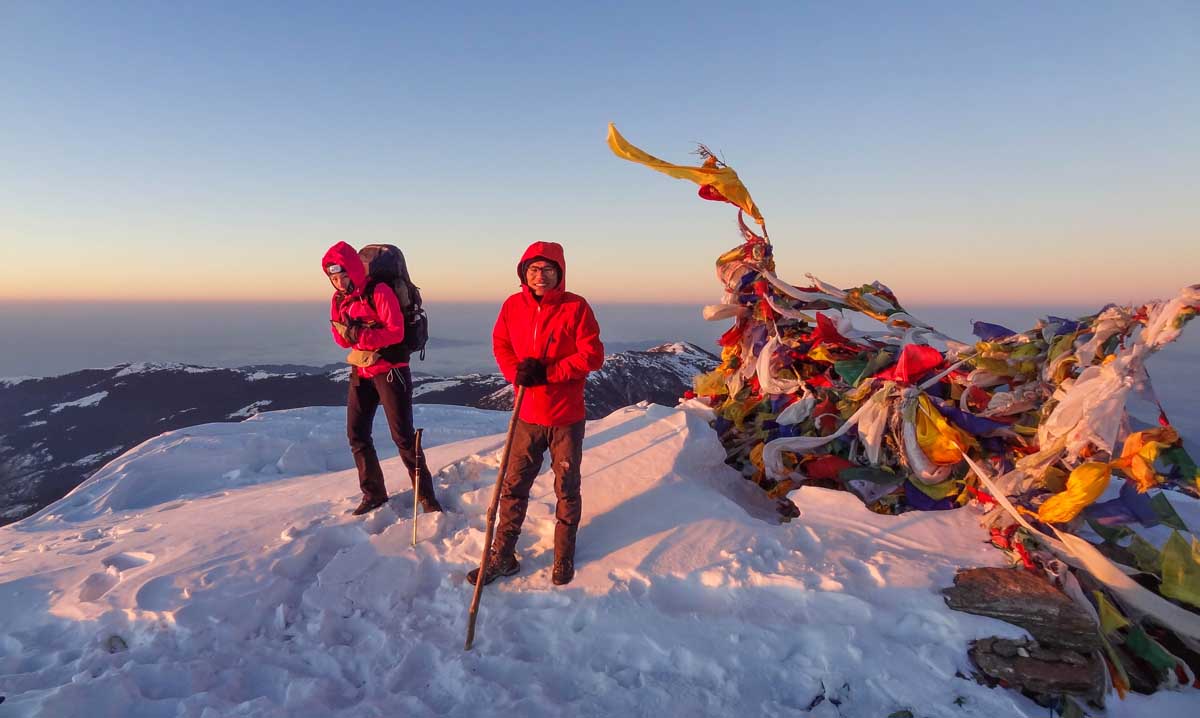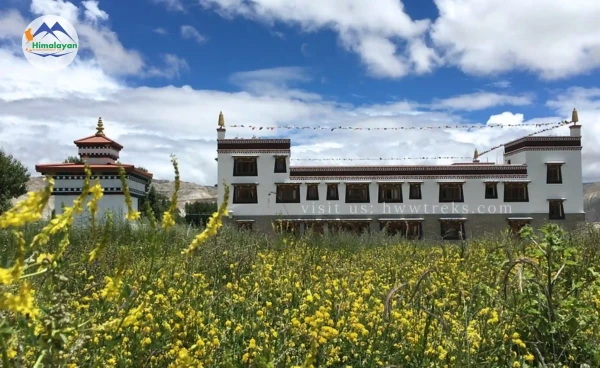- 06/02/2025
- Tags: Trekking in Nepal
- Himalayan Wander Walkers
Less crowded trekking destinations of Nepal
In general, whenever people hear about Nepal, Mount Everest comes to their mind. In reality, it's more than Everest.
Trekking in Nepal is popular because 25 percent of the area is occupied by the mountain region, home to 8 mountains of the 14 highest in the world. The Great Himalayan ranges extend from east to west in the northern part of Nepal. Nepal itself is a beautiful nation. Those who can visit Nepal are worth trekking in the Himalayas of Nepal.
Most of the popular trekking areas of Nepal are very crowded because of their popularity and, of course, increasing domestic tourists. Annapurna Base Camp, Poon Hill, and Everest Base Camp are the most popular trekking destinations in Nepal. Whoever visits Nepal for the first time knows all these places, which are already crowded. Besides these places, there are other good places for trekking where only a few people go. Here are five best less crowded treks in Nepal.
Contents [hide]
Tsum Valley Trek
Many people knew about the Manaslu as it connects with the Annapurna Circuit trek. There fewer people who do Tsum Valley trek. It is a hidden treasure of northern Gorkha lies between the majestic scenery of the Boudha Himal and Himal Chuli, Ganesh Himal, and Sringi Himal. Those who have enough time they can do Tsum Valley and Manaslu at one time. It will take a bit longer than Tsum valley. Since 2007 Tsum Valley was opened for international tourists. Tsumpas are the local people here and they have their own culture, tradition, & dialect mostly related to Tibetan people. The Tsum valley owned many Buddhist monasteries such as Dhephyudonma Gompa, Rachen Gompa, and Mu Gompa. In summer they celebrate festivals like Dhacyhang (Archery) like in Manang and Mustang, Saka Dawa (literally it is the fourth month of Tibetan calendar, a month honoring the Buddha’s Life) and Faknying (Picnic).
Exploring the Tsum Valley provides an unparalleled opportunity to experience both the serene natural beauty and the profound cultural heritage of this secluded Himalayan region. The Tsum Valley is also renowned for its unique cultural heritage, with local communities such as the Tsumba people maintaining traditional ways of life.
What to expect during Tsum Valley Trek?
The Tsum Valley trek offers a rewarding adventure with its stunning landscapes and cultural immersion. Trekkers will encounter panoramic mountain views, including the majestic peaks of the Ganesh Himal and Shringi Himal, and traverse through lush terraced fields, dense forests, and high-altitude meadows. The trek also offers unique cultural experiences, including visits to ancient monasteries and interaction with local communities, providing a deep dive into the region's spiritual and cultural traditions.
1. Ancient Monasteries
A highlight of the Tsum Valley trek is the chance to visit several historic monasteries, each with its own unique charm and significance. Notable among them are Mu Gompa, Panago Gompa, and Gurwa Gompa. These ancient monasteries are not only spiritual centers but also showcase traditional Tibetan architecture and art. Exploring these sacred sites offers insights into the local Buddhist practices and the region’s spiritual heritage, enriching your trekking experience with a deep connection to the valley's cultural and religious roots.
2. Exotic sight of himalayas
The trek offers breathtaking views of the majestic Himalayas, including the towering peaks of Siringi Himal, Ganesh Himal, and Mt. Manaslu. As you ascend through the valley, the panoramic vistas of these snow-capped giants provide awe-inspiring backdrops to your journey. The clear, crisp mountain air and the striking contrasts of the rugged terrain against the serene sky enhance the visual splendor of the trek, making each vista a memorable highlight of your adventure.
3. Animals and Vegetation
The diverse flora and fauna of the Tsum Valley add to the trek’s appeal. The region is home to a variety of wildlife, including langurs, deer, and the elusive kalij pheasant. The vegetation ranges from verdant forests to alpine meadows, creating a rich ecological tapestry. Observing these animals in their natural habitat and encountering unique plant species adds an extra layer of fascination to the trek, allowing you to appreciate the valley’s ecological diversity and natural beauty.
4. Local Culture
Immersing yourself in the local culture of the Tsumbas is a key aspect of the Tsum Valley trek. The Tsumbas, known for their warm hospitality, offer a genuine glimpse into the traditional lifestyle of this Tibetan-influenced community. The trek provides opportunities to engage with locals, learn about their customs, and experience their daily routines. This cultural interaction enriches your journey, offering a deeper understanding of the region’s heritage and the way of life of its inhabitants.
5. Milarepa's Cave
A visit to Milarepa's Cave is a profound spiritual experience during the trek. This sacred site, built into the rock face, is revered as one of the holiest locations in the Tsum Valley. The cave is believed to contain the footprints of Milarepa, a renowned Tibetan Buddhist master. Exploring this spiritual sanctuary provides a unique opportunity to connect with the valley’s religious history and reflect on the significance of Milarepa’s legacy in the context of the local Buddhist traditions.
Tips for Tsum Valley Trek
1. Acclimatization: Proper acclimatization is crucial for high-altitude treks. Plan to gradually adjust to altitude changes to prevent altitude sickness. Spend extra days at key elevations to allow your body to adapt.
2. Hire a Guide: Employing a local guide, preferably someone who speaks Tibetan, can significantly enhance your experience by providing valuable insights into the region's culture and ensuring your safety on the trek.
3. Optimal Trekking Seasons: Avoid trekking during the monsoon (June to August) and mid-winter (December to February) to ensure better trail conditions and more stable weather. The best times are spring (March to May) and autumn (September to November).
4. Stay in Monasteries: Whenever possible, spend a night in a monastery to gain a deeper understanding of the local monastic life and the spiritual heritage of the Tsum Valley.
5. Permits and Safety Precautions: Ensure you obtain the necessary permits for trekking in the Tsum Valley, which can be arranged in Kathmandu or along the trek route. Pay attention to safety, particularly in remote and rugged areas, and follow your guide’s advice to avoid hazards such as landslides and slippery trails.
Outline Itinerary of Tsum Valley Trek (16 Days)
Day 1: Arrival in Nepal (1300m).
Day 2: Sightseeing in Kathmandu.
Day 3: Drive Kathmandu to Machhakhola (870m), 8-9 hours
Day 4: Trek from Machakhola to Jagat (1340m), 6-7 hours.
Day 5: Trek to Lokpa (2240m).
Day 6: Lokpa to Chumling (2386m), 5-6 hours.
Day 7: Chumling to Chhokangparo (Upper Tsum) (3010m), 3 hours.
Day 8: Chhokangparo to Nile (3361m) visit Rachen Monastery on the way
Day 9: Nile to Mu Gompa (3700m)3 hours
Day 10: Mu Gompa to Chhokangparo, visit Milarepa Piren Phu Cave on the way (6-7 hours)
Day 11: Chhokangparo to Gumba Lungdang (3200m), 5-6 hours
Day 12: Gumba Lungdang to Ripchet (2470m), 4-5 hours
Day 13: Ripchet to Philim (1570m), 5-6 hours
Day 14: Philim to Machhakhola (869m)
Day 15: Machhakhola to Kathmandu
Day 16: Fly back to Home Country
For detailed itinerary click here
Best season to visit Tsum Valley Trek
The Tsum Valley trek, though moderately difficult, reaches its highest point at Rachen Gompa (3,240 meters). Spring (March to May) and Autumn (September to November) are ideal times for trekking in this region. During these seasons, the weather is generally clear, with mild temperatures and good visibility. Spring features vibrant blooms of rhododendrons and other wildflowers, while autumn offers crisp air and the chance to experience local harvest festivals.
Summer (June to August) is less favorable due to the monsoon, although Tsum Valley is somewhat sheltered from heavy rains. You may still encounter rain and leeches, and flight delays could occur.
Winter (December to February) is not recommended due to severe cold and heavy snow, making trails difficult and potentially dangerous. Winter trekking is only suitable for highly experienced trekkers equipped for harsh conditions.
Nar Phu and Mesokanto La Pass Trek
Nar Phu Valley, less explored remote and exotic trekking in Annapurna area untouched by the modernization and of course a less crowded too. This place is familiar to those who had done Saribung Pass trek from Upper Mustang lies in the northeast part of Thorang La. Nar Phu was restricted for foreigners until 2002. Yak herding and Agriculture are the major occupations of locals. Hundred year’s old Mani wall, Monasteries, and colorful prayer flags will welcome to villages of Nar and Phu which really heal your all busy life of the city. This trek start and ends at Besi Sahar. Acclimatization is recommended in this trekking for the smooth and successful trek as the trail leads above 5000 meters (Kang la passes).
What to expect during Nar Phu and Mesokanto La Pass Trek?
1. High Altitude Challenge
The trek takes you over the Mesokanto La Pass, which is over 5,000 meters in elevation. With such high altitudes, there's a risk of altitude sickness, so proper acclimatization is crucial. Trekkers should be prepared for challenging elevation gains and must take precautions, like allowing time to adjust to the thinner air.
2. Remote and Isolated Experience
Nar Phu Valley is one of Nepal’s most secluded regions, often referred to as a hidden gem. This trek offers a remote trekking experience with very few tourists, giving you an authentic cultural encounter with the local Tibetan-influenced villages and an atmosphere of untouched natural beauty.
3. Scenic Mountain Views
The trek offers stunning panoramic views of the Annapurna massif, Dhaulagiri range, and other towering Himalayan peaks like Gangapurna, Tilicho, and Nilgiri. These majestic mountains create a dramatic backdrop throughout the journey. The crossing of Mesokanto La Pass provides a unique vantage point, offering trekkers unparalleled views of snow-covered peaks and deep valleys.
4. Cultural Immersion
The villages of Nar and Phu are home to Tibetan-speaking locals who maintain their traditional lifestyle, including Buddhist monasteries and ancient customs. This trek provides a deep cultural experience, allowing you to observe traditional Tibetan architecture, local practices, and centuries-old Buddhist traditions.
5. Rich Wildlife and Flora
The trail passes through the Annapurna Conservation Area, home to diverse wildlife such as blue sheep, snow leopards, and various species of birds. The lower regions are rich with rhododendron forests, while higher altitudes feature rare alpine plants. In spring, the rhododendron forests bloom with vibrant red, pink, and white flowers, enhancing the natural beauty of the area.
Tips for Nar Phu and Mesokanto La Pass Trek
1. Preparation and Training: Research the isolated Nar Phu region and Mesokanto La Pass to understand the route, required permits (Annapurna Conservation Area Permit, Restricted Area Permit), and weather conditions. Train with cardio, strength exercises, and elevation conditioning to handle high altitudes and rugged terrain.
2. Smart Packing: Pack light but ensure essential gear such as warm layers, durable trekking boots, a sleeping bag, and waterproof gear. Since the trek crosses remote areas, it includes high-energy snacks and a portable water purifier.
3. Acclimatization and Hydration: Allow ample time for acclimatization, especially with high passes like Kang La and Mesokanto La. Drink plenty of water and fuel up with nutritious food to maintain your energy throughout the long trekking days.
4. Environment and Safety: Respect the fragile ecosystem of the Nar Phu region by following Leave No Trace principles. Hiring a guide is advisable due to the remoteness of the trek and the challenging mountain passes.
5. Permits and Timing: Ensure you have both the restricted area and conservation permits required for Nar Phu Valley. The best seasons are spring and autumn, as winter snow and monsoon rains make the high passes dangerous to cross.
Outline Itinerary of Nar Phu and Mesokanto La Pass Trek(21 Days)
Day 1: Arrival at Kathmandu
Day 2: City tour, Permit preparation.
Day 3: Kathmandu to Besisahar (760m) to Shyange (1100m), 9-10 hours.
Day 4: Shyange to Taal (2130m), 6 hours.
Day 5: Taal to Koto (2600m), 7 hours.
Day 6: Koto to Dharmasala (3250m), 6 hours.
Day 7: Dharmasala to Kayang (3750m), 5-6 hours.
Day 8: Kayang to Phu village (4240m), 4 hours.
Day 9: Rest day at Phu valley.
Day 10: Phu to Junam (3490m), 5 hours.
Day 11: Trek from Junam to Nar (4120m), 2-3 hours.
Day 12: Explore around Nar Village.
Day 13: Trek from Nar to Ngawal village (3675m), 7-8 hours.
Day 14: Trek from Ngawal to Manang (3500m) 3-4 hours.
Day 15: Manang to Khangsar (3745m), 2-3 hours.
Day 16: Khangsar to Tilicho Lake (4920m) 6-7 hours.
Day 17: Trek from Tilicho Lake to Mesokanto pass. (5315m), 7-8 hours.
Day 18: Mesokanto pass to Jomsom (2741m), 6-7 hours.
Day 19: Fly from Jomsom to Pokhara.
Day 20: Pokhara to Kathmandu
Day 21: Final departure
For detailed itinerary click here
Best Time for Nar Phu Valley and Mesokanto Pass Trek
The ideal time for trekking in Nar Phu Valley and over the Mesokanto Pass is during the spring (March to May) and autumn (September to November). These seasons offer the best weather, with clear skies, mild temperatures, and spectacular views of the surrounding peaks. During spring, the rhododendron forests bloom with bright red flowers, adding a splash of color to the landscape. In autumn, the harvest season brings vibrant cultural festivities, giving trekkers a chance to witness local traditions up close.
Dolpo Trek
Dolpo is incredible and more dynamic than other treks in Nepal which will bring you a rewarding trip in the Himalayas. This area is opened in 1980 for foreigners. If you are looking for a rewarding trip than this is the right trekking destination for those who love culture and less crowded. Because of the controlled area, it requires a special permit of 500 US dollars per person for 10 days. Eric Valli's movie called “Caravan” (Himalaya) and Peter Matthiessen’s book “Snow Leopard” played an important role in introducing Dolpo all over the world. If you haven’t watched and read please go through them. It’s really good as it demonstrates the real lifestyle of Dolpo.
What can you expect during Dolpo Trek?
The Dolpo trek can be much more exciting and rewarding as it surprises you with its natural beauty and its features from each and every step of your trip. One can get a chance to witness the beauty of Shey Phuksundo lake and Shey Gompa, some famous peaks and even many wild animals too.
1. Beautiful View of the Himalayas
The Dolpo region offers some of the most stunning and clear views of the mighty Himalayas (Annapurna and Dhaulagiri ranges along with Mt. Saipal and Mt. Api.). Trekkers are greeted with breathtaking vistas of towering snow-capped peaks, deep valleys, and pristine landscapes. The rugged beauty of the Himalayas forms a dramatic backdrop to the trek, making every turn a visual feast.
2. Sights of wild animals
Dolpo is home to a rich variety of wildlife. The elusive snow leopard, often called the "ghost of the mountains" roams the high altitudes here, while the rare musk deer and the agile blue sheep can be spotted in the region’s rocky terrain. These species, adapted to the harsh environment, contribute to the unique biodiversity of the area.
3. 800-Year-Old Shey Gompa
The Shey Gompa, an ancient monastery located at the base of Crystal Mountain, is one of the most significant spiritual and historical landmarks in the region. With a history spanning over 800 years, this monastery is a center of Tibetan Buddhism and a sacred pilgrimage site for many. Its rich history, spiritual importance, and serene surroundings make it a must-visit during the trek.
4. Shey Phoksundo National Park
As Nepal’s largest national park, Shey Phoksundo National Park is a treasure of natural beauty and biodiversity. It is home to a wide range of flora and fauna, including rare and endangered species such as the snow leopard. The park also preserves the cultural heritage of the local communities, offering trekkers a chance to explore both the natural and cultural wonders of the region.
5. Shey Phoksundo Lake
The pristine Shey Phoksundo Lake is one of the crown jewels of the Dolpo trek. Known for its striking turquoise blue color, it is Nepal’s deepest lake, located at an altitude of 3,612 meters. Surrounded by rugged cliffs and dense forests, the lake’s crystal-clear waters reflect the surrounding mountains, creating an ethereal and serene atmosphere.
6. Indigenous Culture of the Mountain People
Dolpo is home to a unique culture that has remained relatively untouched by modern influences. The local communities, primarily of Tibetan descent, still practice age-old customs and rituals. The people here follow the Bon religion and Tibetan Buddhism, which deeply influences their way of life. Visiting this region offers a rare insight into the indigenous culture of the mountain people, characterized by their traditional dress, language, and spiritual practices.
7. Ringmo Village
Nestled near Shey Phoksundo Lake, Ringmo Village is a picturesque settlement that provides an authentic glimpse into life in the remote Himalayas. This traditional village is home to a small community of Tibetan Buddhists and is known for its well-preserved culture and serene surroundings. The village is an ideal place for trekkers to experience the warm hospitality of the local people and witness their way of life amidst the breathtaking natural landscape.
Together, these elements create an unforgettable experience for trekkers in Dolpo, blending natural beauty, cultural heritage, and spiritual significance.
Tips for Dolpo Trek
1. Prepare for High Altitudes: Dolpo trekking often reaches altitudes above 4,000 meters, so proper acclimatization is essential. Stay flexible with your itinerary and allow for rest days.
2. Gear and Health: Ensure you have proper clothing and trekking gear suited for challenging conditions. Stay healthy by eating well and keeping hydrated with hot drinks during your trek.
3. Permits and Documents: Carry the necessary trekking permits, your passport, and travel insurance that covers helicopter rescue, as these are vital for safety and access.
4. Best Time and Local Guides: Plan your trek according to the best season and hire experienced local guides. They know the area well and can provide better insights into the region's culture and landscapes.
5. Tipping Etiquette: Don’t forget to tip your crew members, as it is customary. A standard tip is around 10-15% of their wages.
Outline Itinerary Dolpo Trek(26 Days)
Day 1: Arrival in Kathmandu/ (1400 m)
Day 2: Kathmandu to Nepalgunj (150m)/ flight
Day 3: Nepalgunj to Juphal (2475m)/ flight and Juphal to Dunai/ 3 hrs trek.
Day 4: Dunai to Chhepka (2687m)/ 6 hrs
Day 5: Chhepka to Chunuwar (3110m)/ 6 hrs
Day 6: Chunuwar to Phoksundo Lake (3600m)/ 5-6 hrs
Day 7: Phoksundo – Rest day
Day 8: Phoksundo- Sallaghari/ 5-6hrs trek
Day 9: Sallaghari to Nangdala HC (4717 m)/ 5-6 hrs trek
Day 10: Nangdala HC to Shey Gompa/ (4280m) Crossing Nangdala pass (5240m)/ 5-6hrs
Day 11: Shey Gompa to Namgung Gompa / 6-7 hrs crossing Shey La Pass (5100m)
Day 12: Namgong Gompa to Saldang/ 4-5 hrs camping.
Day 13: Saldang to Day hike to Yangjer Gumba/ 4599m
Day 14: Saldang to Komash village
Day 15: Komash village to Shimen
Day 16: Shimen to Tinje
Day 17: Tinje to Yak Kharka
Day 18: Yak Kharka (4780m) to Chharka / 5 hrs walk crossing Mola Pass (5030m)
Day 19: Chharka to Norbulung/ Nulungsumda
Day 20: Nulungsumda/ Norbulung to Ghalden Ghuldum (4247m) Crossing Niwala (5120m) and Jungbenla (5550m) passes.
Day 21: Ghalden Ghuldum/ (4247m) to Sangta/ (3777m)
Day 22: Santa to Phalyak/ (3175m)
Day 23: Phalyak to Jomsom/ (2720m)
Day 24: Jomsom to Pokhara
Day 25: Flight to Kathmandu from Pokhara
Day 26: Final Departure
For detailed itinerary click here
Best Season to visit Dolpo Trek
The best time to trek in Dolpo, Nepal, varies by season. Spring, from late March to the end of May, offers pleasant weather with bright skies and rising temperatures, ideal for trekking. The trails become visible post-winter, and the rhododendron blossoms add vibrant hues to the landscape. However, early spring may still have snow that can make some passes difficult to cross.
Summer, from June to August, is also a viable time for trekking. Dolpo is a rain-shadow area, so it remains relatively dry even during the monsoon season. The high passes are snow-free, and the landscapes are lush. However, be prepared for potential flight cancellations to Juphal due to overcast weather and rain in the lower regions.
Autumn, from September to mid-November, is considered the ultimate season for trekking in Dolpo. The skies are clear and bright, offering stunning views of the Himalayas. This season also allows for interaction with locals during the fall harvest. However, as November progresses, snow may start to appear, so it’s advisable to trek earlier in the autumn or come well-prepared.
Winter, from December to February, is not recommended due to the extremely cold temperatures and snow-covered trails. Passes become impassable, making trekking challenging and potentially unsafe. But if you are willing to trek during winter too, you can plan according to your feasibility and schedule.
Kanchenjunga circuit Trek
Kanchenjunga (8,586 meters) trek is rewarding not only because of the world's third-highest mountain. Besides that there are many more to experience. This circuit trek combined both reaching Pang Pema (5,140m) on the north and Oktong (4,580m) on south Kanchenjunga base camp respectively. During the circuit journey, you will see the difference of northern side and the southern side of people’s lifestyles and cultures. Breathtaking mountain views and diversity of culture make your trip more interesting. This area is opened for international trekkers since 1988. Before this trek done only by camping but nowadays the tea houses are built everywhere in overnight stop places. So, it’s less cost and much comfort than doing camping. Tongba highlight this area which is a local wine prepared from fermented millet seeds and added with boiled water. Trekkers also try this wine every evening to ease their long hours of walk.
What can you expect during Kanchenjunga circuit Trek?
The Kanchenjunga Circuit trek offers an exhilarating and rewarding experience, surprising trekkers with its stunning natural beauty and diverse landscapes at every step of the journey. Along the trek, you’ll have the chance to witness the majestic Kanchenjunga massif, explore remote villages, and encounter breathtaking sights like the Pang Pema and Oktong base camps. The trek also offers opportunities to spot rare wildlife and immerse yourself in the rich culture of the local Sherpa communities, making it a truly unforgettable adventure.
1. High Altitude and Rugged Terrain
The Kanchenjunga Circuit trek presents both high-altitude challenges and rugged terrain, making it a demanding adventure. Trekkers face significant elevation gains, increasing the risk of altitude sickness, so proper acclimatization and planned rest days are essential to avoid serious health risks. In addition, the steep ascents and descents along rocky, uneven trails, often covered in snow and ice at higher altitudes, require strong hiking skills and endurance. Navigating this challenging terrain safely demands good physical fitness, trekking poles, crampons, and sturdy hiking boots to handle the varying and often harsh conditions.
2. Remote wilderness yet spectacular view
A defining feature of the Kanchenjunga Circuit trek is its remote wilderness, where sparsely populated villages are spread far apart, and access to basic services is limited. Trekkers must be well-prepared, carrying essential provisions and gear, as the lack of infrastructure adds to both the challenge and adventure. Despite its remoteness, the trek rewards adventurers with some of the most spectacular mountain views in the world. Panoramic vistas of the Kanchenjunga massif and its surrounding peaks, towering glaciers, and dramatic landscapes offer awe-inspiring, unforgettable sights that make the journey worthwhile.
3. Diverse Landscapes
The Kanchenjunga region offers an impressive variety of landscapes. Trekkers pass through lush subtropical forests, rich with biodiversity, and ascend into alpine meadows dotted with wildflowers. Higher up, the route leads across glaciers and rocky, barren terrains, showcasing the dramatic transitions between ecosystems. This diversity adds to the trek’s appeal and keeps each day interesting.
4.Cultural Encounter
A key highlight of the Kanchenjunga Circuit trek is the opportunity to interact with local Sherpa communities. These highland inhabitants have a rich cultural heritage, and trekkers can experience their traditions, language, and way of life. Sherpa hospitality is well-known, and visitors can immerse themselves in the local culture by staying in teahouses, sharing meals, and learning about the region’s spiritual and historical significance.
5. Wildlife Viewing
The Kanchenjunga Conservation Area is home to rare and endangered species, making wildlife viewing an exciting aspect of the trek. Trekkers may catch glimpses of red pandas, snow leopards, blue sheep, and other high-altitude animals in their natural habitats. Bird watchers will also enjoy spotting a variety of Himalayan bird species, adding to the richness of the trekking experience.
6. Weather Considerations
Weather in the Kanchenjunga region is highly variable and can be unpredictable. Trekkers may encounter rain, snow, or strong winds depending on the season and altitude. It's important to be well-prepared with appropriate gear for all weather conditions, as rapid changes in weather can affect trail conditions and overall safety. Weather patterns should be closely monitored to ensure safe trekking.
Tips for Kanchenjunga circuit Trek
1. Acclimatize and Prepare for Altitude: Altitude sickness is a significant risk in the Kanchenjunga region due to the high elevations. To reduce the risk, it’s essential to acclimatize properly by spending extra days at lower altitudes before ascending further. This allows your body to adjust to the reduced oxygen levels, preventing serious health issues.
2. Gear and Weather Preparation: The weather in the Kanchenjunga region is highly unpredictable, with potential snowfall at higher altitudes even outside the winter season. Packing appropriate clothing for varying temperatures, including layers for warmth and waterproof gear, is essential. Additionally, make sure you bring sturdy trekking boots, trekking poles for stability on uneven terrain, and a good-quality backpack. A warm, insulated sleeping bag is also crucial, as nighttime temperatures can drop significantly.
3. Hire an Experienced Guide: Hiring an experienced guide is highly recommended when trekking in the remote Kanchenjunga area. Guides are familiar with the challenging terrain, local weather patterns, and potential hazards like landslide-prone areas. A guide can also enrich your experience by providing insight into the local culture and environment.
4. Plan for the Best Season: The ideal time to trek in the Kanchenjunga region is during spring (March to May) and autumn (September to November). These months offer more stable weather and pleasant temperatures for trekking. However, these are also the peak trekking seasons, meaning the trails and teahouses can become crowded. If you prefer a quieter experience, consider trekking at the edges of these seasons while still being mindful of weather conditions.
5. Permits and Safety Precautions: Before starting your trek, make sure to obtain the Kanchenjunga Conservation Area Project (KCAP) Entry Permit. You can get this permit either in Kathmandu or along the trek route. Additionally, be mindful of safety when trekking through rugged terrain, especially in areas prone to landslides or on slippery stone steps. Always follow your guide’s advice, and exercise caution in tricky sections of the trail to ensure a safe and enjoyable journey.
Outline Itinerary of Kanchenjunga circuit Trek (21 Days)
Day 1: Arrival in Nepal.
Day 2: Sightseeing and trek preparation.
Day 3: Flight to Bhadrapur and drive to Taplejung. 7-8 hours.
Day 4: Drive from Taplejung to Tapethok (3-4 hours) and trek to Sekhatum (1,509m), 2 & half hours.
Day 5: Sekhathum to Amjilosa (2,498m), 4-5 hours.
Day 6: Amjilosa to Gyabla (2,730m) 4-5 hours.
Day 7: Gyabla to Ghunsa (3,595m) 6-7 hours.
Day 8: Acclimatization day at Ghunsa.
Day 9: Ghunsa to Kambachen (4,145m), 5-6 hours.
Day 10: Kambachen to Lhonak (4,800m) 5-6 hours.
Day 11: Lhonak to Kanchenjunga north base camp (5,143m) 4 hours and back to Khambachen 3-4 hours.
Day 12: Kambachen to Ghunsa (3,595m) 4-5 hours.
Day 13: Ghunsa to Sele Le (4,290m) 5-6 hours.
Day 14: Sele Le to Cheram (3,868m) 5-6 hours.
Day 15: Cheram to Ramche and back to Cheram (3,868 m) 7-8 hours
Day 16: Cheram to Tortong (2,980m) 3-4 hours.
Day 17: Tortong to Yamphudin (1,692m) 6-7 hours.
Day 18: Yamphudin to Happukhola (1400m)-7 to 8 hours
Day 19: Drive Early in the Morning Hapukhola to Ilam (800m) – 7 to 8 Hours
Day 20: Drive Ilam to Bhadrapur (91m) – 2 ½ to 3 Hours and fly to Kathmandu – 35 to 40 minutes
Day 21: Farewell.
For detailed itinerary click here
Best Season to Visit the Kanchenjunga Circuit Trek
The best time to trek in the Kanchenjunga region depends on the season, each offering unique conditions. Spring (late March to the end of May) and Autumn (September to mid-November) is a popular time, with mild temperatures and clear skies perfect for trekking. During this season, the trails come to life as rhododendrons and other wildflowers bloom, adding vibrant colors to the landscapes and trekkers can also experience the local harvest season, which adds cultural richness to the journey.. However, some high passes may still have snow in early spring, making them more challenging to cross.
Summer (June to August) is another viable option, particularly since the Kanchenjunga region lies in the rain shadow of the Himalayas, making it drier than other parts of Nepal during the monsoon. The high passes are typically snow-free, and the lush greenery of the lower regions adds to the beauty. However, monsoon rains in lower areas can lead to flight delays or cancellations, and leeches may be an issue in wetter zones.
Winter (December to February) is not recommended for trekking in Kanchenjunga due to extreme cold and heavy snow, making high passes impassable and trekking routes dangerous. If you’re an experienced trekker and well-prepared for the harsh conditions, winter trekking is possible but challenging. For most, it's advisable to avoid this season due to the risks involved.
Gosainkunda and Helambhu Trek
The Gosainkunda Trek is the closest trekking destination from the Kathmandu Valley in the northern part. This trek offers stunning views of the Himalayas and the more than 7 sacred lakes. Holy Gosainkunda, the biggest lake among all is a popular pilgrimage site of Lord Shiva. Every year during the August full moon festival of Janai Purnima 20,000 Hindu devotees visit there. After reaching the Laurebina Pass just next to Surya Kunda lake at the height of 4,610m, the path descends to the Helambu area. Helambu is all about the cultural things where the Guru Rinpoche and Milarepa visited in the centuries back. Helambu is surrounded by the Giant Mountains and on the northern side and hills on the southern. You will love the beautiful villages of Sherpa, Tamang, and Hyolmo People. There are few popular Villages like Sermathang, Tarkegang, and Melamchi that are popular for their home decorations and hospitality.
What to expect during Gosainkunda and Helambhu Trek?
1. Cultural Immersion
The Helambu Cultural Trek offers a deep cultural experience with visits to traditional villages of the Hyolmo, Sherpa, and Tamang people. Trekkers can explore ancient Buddhist monasteries, Mani walls, and prayer flags, immersing themselves in the spiritual and simple lifestyles of these indigenous communities.
2. Scenic Himalayan Views
Despite being a low-altitude trek, the Helambu Circuit provides stunning panoramic views of the central Himalayan ranges, including peaks like Langtang, Jugal Himal, and Ganesh Himal. The trek’s highest point, Tharepati, offers a breathtaking view of the snow-capped mountains, rewarding trekkers with a magnificent Himalayan backdrop.
3. Lush Forests and Biodiversity
The trek passes through Shivapuri National Park, where trekkers can enjoy the beauty of dense forests filled with rhododendron, bamboo, and oak trees. The region is rich in wildlife, and trekkers may spot species like red pandas and langur monkeys, as well as various bird species.
4. Moderate Trekking Experience
The Helambu Circuit is a moderately easy trek that can be completed in about a week, making it suitable for both beginner and experienced trekkers. The trails offer a mix of gentle ascents and descents, with some high ridges, but no extreme high-altitude challenges, making it a comfortable trek.
5. Accessibility and Flexibility
One of the highlights of the Helambu Circuit is its proximity to Kathmandu. Trekkers can start the trek from Sundarijal, just an hour's drive from the city, making it one of the most accessible trekking routes. Additionally, it can be easily combined with other treks, such as the Langtang Valley or Gosainkunda, offering flexibility depending on time and interest.
Tips for Gosainkunda and Helambhu Trek
1. Preparation and Training: Research the Helambu Trek route, a moderate trek near Kathmandu. Familiarize yourself with required permits (TIMS and Langtang National Park Entry Permit) and expected weather conditions. Prepare with light cardio and hiking practice to handle the varying terrain.
2. Smart Packing: Pack light but include essentials like layered clothing for cold mornings and warm afternoons, waterproof gear, sturdy hiking boots, and a small first-aid kit. Carry a reusable water bottle and purification tablets, as water sources are available along the trail.
3. Acclimatization and Hydration: Though Helambu is at a lower altitude, take it slow to enjoy the landscapes. Stay hydrated and eat balanced meals at tea houses to keep your energy levels up throughout the trek.
4. Environment and Safety: Follow Leave No Trace principles to protect the lush forests and terraced farmlands. Hiring a local guide is beneficial for navigating trails and gaining insights into the culture and landscapes.
5. Permits and Timing: Secure the necessary permits for trekking in the Langtang region. Spring and autumn are the best seasons, offering clear skies and pleasant weather, while winter can bring snow and the monsoon season may cause muddy trails.
Outline Itinerary of Gosainkunda and Helambhu Trek(8 Days)
Day 1: Drive from Kathmandu to Thulo Syabru (2260m) 6-7 hours
Day 2: Trek from Thulo Syabru to sing Gompa (3250m) 3-4 hours
Day 3: Trek from Sing Gompa to Laurebina Yak (3920m) 2-3 hours
Day 4: Trek from Laurebina Yak to Gosaikunda Lake(4400) 2-3 hours
Day 5: Gosainkunda Lake to Gopte (3440m) 5-6 hours
Day 6: Gopte to Kutumsang (2,470m) 4-5 hours
Day 7: Kutumsang to Chisapani (2,251m) 6-7 hours
Day 8: Chisapani to Kathmandu (1340m) 4 hours
For detailed Itinerary click here
Best season to visit Gosainkunda and Helambhu Trek
The ideal seasons for trekking the Helambu Circuit in Nepal are spring (March to May) and autumn (September to November):
The weather during spring is mild and comfortable for trekking, with temperatures ranging between 10–20°C. Rhododendron forests bloom during this time, adding vibrant colors to the trail, and the skies are usually clear, offering unobstructed views of the mountains.
Autumn is another perfect time to trek, featuring stable weather, clear skies, and excellent visibility of mountain ranges like Annapurna, Dhaulagiri, and Manaslu. The temperature is also comfortable, making it an ideal time for trekkers to enjoy the scenic beauty of the region.
During both seasons, the temperatures are pleasant, but the weather in the mountains can still be unpredictable, so it’s important to be prepared for sudden changes. These periods offer the best trekking experience with breathtaking views and diverse natural beauty.
Pikey Peak Trek
Pikey Peak Lies in the eastern part of Nepal in Ramechap district. Pikey trek is best for the Panoramic view of Himalaya's popular peak like Everest, Lhotse, Makalu, Kanchenjunga, Dudkunda, Gairishankar, and many other mountains. The trek offers you the beautiful culture of Sherpa people, Monasteries, and the jawdropping Himalayas. This trek can be started by driving to Dhap Bazar or Jiri from Kathamndu. Trek ends at Salleri where the Phaplu airport locates. On your way back you can take a flight from Phaplu or either drive. The trek can be done from 6 to 7 days based on tea houses.
What to expect during Pikey Peak Trek?
Pikey Peak offers trekkers a stunning blend of natural beauty, cultural experiences, and panoramic mountain views that make it a truly memorable destination in Nepal:
1. Panoramic Himalayan Views
One of the key highlights of Pikey Peak is the breathtaking panoramic views of some of the highest peaks in the world. From the summit, trekkers can marvel at Mount Everest, Makalu, Kanchenjunga, Dhaulagiri, and many other Himalayan giants. The sunrise from Pikey Peak is particularly stunning, with golden light illuminating the snow-capped mountains.
2. Lush Forests and Diverse Flora
The trek takes you through a variety of landscapes, including dense forests of rhododendron, pine, and bamboo. During spring, the rhododendron forests are in full bloom, adding vibrant colors to the trek. Alpine meadows and terraced farmlands also offer scenic beauty as you ascend toward the peak.
3. Sherpa Villages and Cultural Immersion
The Pikey Peak trek passes through traditional Sherpa villages, offering trekkers a chance to experience the rich culture and heritage of the Sherpa people. You can visit ancient Buddhist monasteries, interact with locals, and witness traditional Tibetan Buddhist practices like prayer flags and Mani walls.
4. Tranquil Trails and Less Crowded Experience
Unlike some of the more popular trekking routes in Nepal, Pikey Peak remains relatively off the beaten path. This allows trekkers to enjoy a peaceful and serene environment, away from the crowds, making it a great option for those seeking solitude and a more intimate connection with nature.
5. Diverse Terrain
The trek features a variety of terrains, including terraced hillsides, alpine meadows, rivers, and waterfalls. The ever-changing landscape keeps the trek interesting and provides photographers with ample opportunities to capture the natural beauty of the region.
Tips for Pikey Peak Trek
1. Preparation and Training: Research the Pikey Peak trek route, permits (no restricted permits needed but TIMS and Sagarmatha National Park permits may be required), and local weather. Train with hiking and aerobic exercises to build endurance for the steady climbs and descents.
2. Smart Packing: Pack essentials like warm layers, a sturdy pair of trekking boots, a rain jacket, and a sleeping bag. Keep your load light, but include a headlamp and water purification tablets as amenities may be basic along the trail.
3. Acclimatization and Hydration: Although Pikey Peak is a lower altitude trek, it’s still important to pace yourself and stay hydrated. Eat nutritious meals and carry snacks to maintain energy during long hiking days.
4. Environment and Safety: Practice Leave No Trace principles to help preserve the serene environment of the lower Everest region. Hiring a local guide can enhance your experience and provide support in case of emergencies.
5. Permits and Timing: Obtain the necessary permits for trekking in the Solukhumbu region. Spring and autumn are ideal seasons for clear views of Everest and other Himalayan peaks, while avoiding the difficulties of monsoon rains and winter snow.
Outline Itinerary of Pikey Peak Trek (9 Days)
Day 1: Arrive Kathmandu (1,300m/4,264ft)
Day 2: Drive to Dhap Bazaar (2850m/9350.39ft.), 8-9 hr drive.
Day 3: Trek to Jhapre (2815m/9235.56ft.), 4-5 hr
Day 4: Trek to Pikey Base Camp (3640m/11942.26ft.), 5-6 hr
Day 5: Trek to Junbesi (2680m/8792.65ft.), 6-7 hr via Pikey Peak (4065m/13336.61ft. )
Day 6: Visit Thubtenchoeling Monastery
Day 7: Trek to Phaplu (2380m/7809ft.), 4-5 hr
Day 8: Phaplu to Kathmandu
Day 9: Final Departure
For detailed itinerary click here
Best time to visit Pikey Peak Trek
The best time to trek Pikey Peak in Nepal is during spring (February to May) and autumn (September to December), offering ideal weather and beautiful landscapes.
Spring (February to May): This season is perfect for trekking, with mild temperatures and stunning views of rhododendrons in full bloom, coloring the landscape with vibrant hues. However, spring is a popular trekking season, so expect more trekkers on the trails.
Autumn (September to December): Autumn offers stable and clear weather, with excellent visibility and cooler, crisp air. The autumn greenery adds vibrancy to the scenery, making it another fantastic time to visit. The trails are quieter compared to spring, making for a peaceful trekking experience.
Winter (December to January): While winter brings sunny days, it also comes with freezing temperatures, especially at higher altitudes. Trekkers should be prepared for extreme cold and some tea houses may be closed. However, the trails are less crowded, offering solitude.
Monsoon (June to August): Trekking during the monsoon is not recommended due to heavy rainfall, slippery trails, and the risk of landslides. Leeches are also common during this time, making the trek uncomfortable and potentially dangerous.
Summary
Nepal boasts an abundance of hiking and trekking destinations, each with unique features and stunning natural surroundings. Manaslu, Poonhill Ghorepani, Everest Region and Base Camp Trek, Annapurna Region and Base Camp Trek, Langtang Valley Trek, and so on are a few of the well-known trekking destinations in Nepal. Thousands of visitors, both domestic and foreign, come here every year for a variety of reasons, including adventure, refreshment, and a chance to escape the bustle of the city. These hiking routes are really popular and frequently used by many people. Is it the only thing Nepal has to offer, though? Nope. Many places have yet to be visited or are still relatively unexplored.
